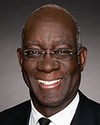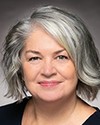Thank you very much, Mr. Chair.
I am pleased to be with you today.
I have to say that the last time I was in the veterans affairs committee I was PS for Veterans Affairs. Since that time, my platoon has grown. Not only are my two sons still serving, but I have a daughter-in-law who's also serving. As I said, the force generator in me is continuing.
One of the questions I have is following up on Mr. Desilets. We talked a little bit about prevention in terms of modified equipment. Female serving members were allowed as of 1989 to take on combat roles. We're talking over 30 years ago, and yet we're hearing that we still do not have the proper equipment for women soldiers, for instance the Kevlar vest or the backpack. I went and visited a QM. I put the backpack on. It's too long for me, so it rubs on the back of my lower back. Obviously, I'm not a serving member so wearing it for half an hour is one thing, but carrying around an 80-pound pack on your back that is not adequately made for the frame of a female.... I'm sure the two colonels here know exactly what I'm talking about.
What is it going to take for the Canadian Armed Forces to be able to equip women in the military with the proper equipment so that they can prevent injuries? If we're hearing that musculoskeletal injuries are happening more predominantly in female military members, what can we be doing to help you make sure you have the necessary equipment in the military adapted for women we want to recruit and retain?






